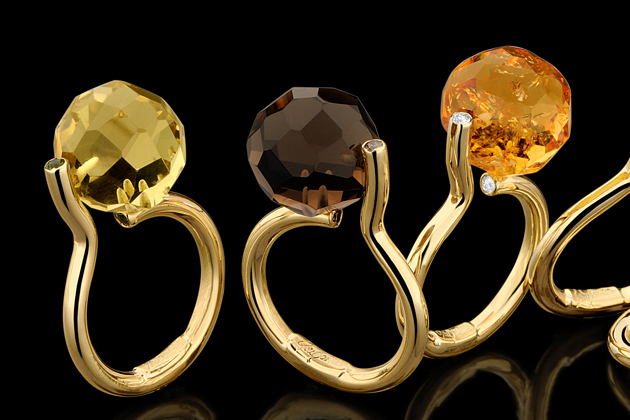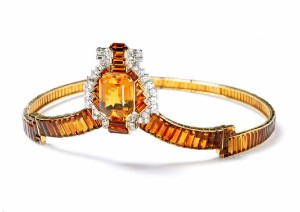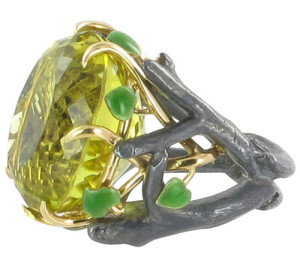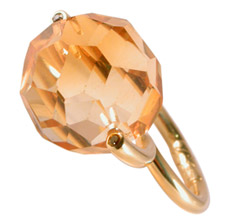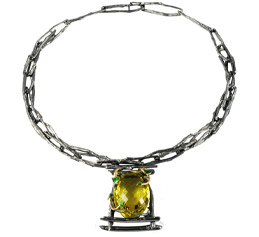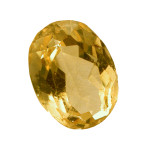 Le terme vient du latin citrus qui désigne le citron, par référence à sa couleur. Mais alors il s’agit d’un citron très mur parce que la citrine est d’un jaune un peu ocré et seules les citrines dites « lemon » se parent d’un jaune acidulé, citron.
Le terme vient du latin citrus qui désigne le citron, par référence à sa couleur. Mais alors il s’agit d’un citron très mur parce que la citrine est d’un jaune un peu ocré et seules les citrines dites « lemon » se parent d’un jaune acidulé, citron.
Son aspect
La citrine appartient à la vaste famille des quartz, (silicates, Si O2). Sa couleur jaune est due à la présence d’oxyde de fer dans le minéral. La citrine se trouve assez rarement à l’état naturel, le plus souvent, elle est le produit de la transformation de l’améthyste chauffée qui, au-dessus de 250°, perd sa couleur violette et vire au jaune.
La citrine a donc les mêmes caractéristiques physiques que l’améthyste ou que le cristal de roche. Avec son indice de réfraction de 1,544 à 1,553, elle a un éclat doux et doit être bien taillée pour briller. Sa dureté de 7 est le minimum requis pour ne pas être rayée trop rapidement par les poussières de silice contenues dans l’air et sa structure (difficile à cliver) la rend également résistante aux chocs …
Sa provenance
La citrine provient principalement du Brésil, en particulier du Minas Gerais (la région renommée pour ses mines de pierres précieuses) et de l’état du Rio Grande do Sul. C’est d’ailleurs du Brésil que provient l’une des plus grosses citrines connues puisqu’elle « pèse » 2258 carats (429 grammes). On peut l’admirer au Smithsonian Institute de Washington.
On trouve aussi des citrines dans l’Oural, aux Etats-Unis (spécialement en Californie), en Espagne (dans les provinces de Castille et Leon) ou bien encore à Madagascar (dans la province d’Antananarivo).
Sa symbolique
La citrine est associée à la planète Mercure. Les adeptes de l’ésotérisme considèrent la citrine comme la pierre de l’Ange Elemiah qui, dans la Kabale, est porteur d’une grande force de lumière alliée à la force purificatrice du feu. La charmante citrine a en tous cas traversé les siècles avec une excellente réputation puisque selon les époques elle prenait une résonance d’espoir, de jeunesse, de santé et de fidélité.
Sur tapis rouge
A l’occasion de la soirée fêtant l’avant-première du film « Le discours d’un roi », certains heureux élus ont pu admirer dans les salons privés de son Excellence Sir Peter Westmacott, ambassadeur de Grande-Bretagne en France, un diadème magnifique en platine, composé de citrines et diamants, il fait partie d’une très belle commande reçue par Cartier Londres lors du couronnement du roi George VI en mai 1937. Photo N. Welsh, Collection Cartier
Comment je l’aime
La citrine n’est pas une pierre que je regarde « spontanément », mais elle est vraiment jolie quand elle est bien mise en valeur par les créateurs. Je pense tout particulièrement aux bagues Rock de Yaël Sonia, (portée en toi et moi avec un quartz « fumée ») ou aux incroyables citrines montées par Philippe et Laurence Ratinaud, de leur collection brindilles.

